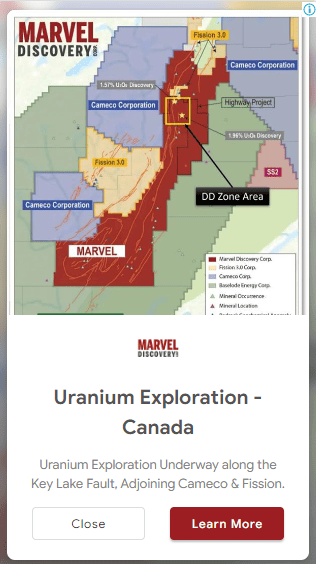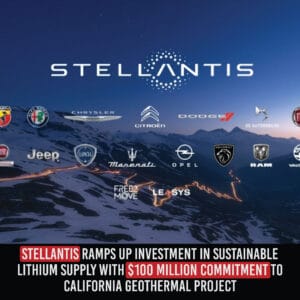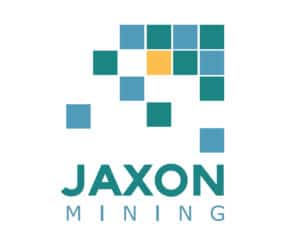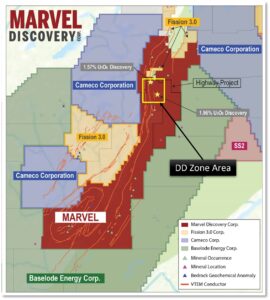2021-10-04 04:00:34
- The high cost of studying deep-sea ecosystems means that many scientists have to rely on funding and access provided by companies seeking to exploit resources on the ocean floor.
- More than half of the scientists in the small, highly specialized deep-sea biology community have worked with governments and mining companies to do baseline research, according to one biologist.
- But as with the case of industries like tobacco and pharmaceuticals underwriting scientific research into their own products, the funding of deep-sea research by mining companies poses an ethical hazard.
- Critics say the nascent industry is already far from transparent, with much of the data from baseline research available only to the scientists involved, the companies, and U.N. agency that approves deep-sea mining applications.
When Cindy Van Dover started working with Nautilus Minerals, a deep-sea mining company, she received hate mail from other marine scientists. Van Dover is a prolific deep-sea biologist, an oceanographer who has logged hundreds of dives to the seafloor. In 2004, Nautilus invited Van Dover and her students to characterize ecosystems in the Manus Basin off Papua New Guinea, a potential mining site with ephemeral hydrothermal vents teeming with life in the deep ocean.
Van Dover was the first academic deep-sea biologist to conduct baseline studies funded by a mining company, an act considered a “Faustian pact” by some at the time. Since then, more deep-sea biologists and early-career scientists aboard research vessels funded by these firms have conducted such studies. But partnering with mining companies raises some thorny ethical issues for the scientists involved. Is working with the mining industry advancing knowledge of the deep sea, or is it enabling this nascent industry? While there are efforts to disclose this scientific data, are they enough to ensure the protection of deep-sea ecosystems?
“I don’t think it’s sensible or right to not try to contribute scientific knowledge that might inform policy,” Van Dover told Mongabay in an interview in February this year. With deep-sea mining, she added, “we can’t just stick our heads in the sand and complain when it goes wrong.”
More than half of the scientists in the small, highly specialized deep-sea biology community have worked with governments and mining companies to do baseline research, according to Lisa Levin, professor of biological oceanography at the Scripps Institution of Oceanography. Collecting biological samples in the deep sea is expensive: a 30-day cruise can cost more than $1 million. The U.S. National Science Foundation, the European Union and the National Science Foundation of China have emerged as top public funders of deep-sea research, but billionaires, foundations and biotech companies are getting in on the act, too.
Governments and mining companies already hold exploration licenses from the U.N.-affiliated International Seabed Authority (ISA) for vast swaths of the seafloor. Although still in an early stage, the deep-sea mining industry is on the verge of large-scale extraction. Mining companies are scouring the seabed for polymetallic nodules: potato-shaped rocks that take a millennium to form and contain cobalt, nickel and copper as well as manganese. Nauru, a small island in the South Pacific, earlier this year gave the ISA a two-year deadline to finalize regulations — a major step toward the onset of commercial deep-sea mining. The ISA is charged with both encouraging the development the deep-sea mining industry and ensuring the protection of the marine environment, a conflict of interest in the eyes of its critics.
The Metals Company, a mining company based in Vancouver, Canada, formerly known as DeepGreen, recently said that it spent $75 million on ocean science research in the Clarion Clipperton Zone (CCZ) in the Pacific. The company has established partnerships with “independent scientific institutions” for its environmental and social impact assessments. Kris Van Nijen, managing director of Global Sea Mineral Resources said, “It is time, unambiguously and unanimously, to back research missions … Support the science. Let the research continue.” UK Seabed Resources, another deep-sea mining firm, lists significant scientific research that uses data from its research cruises in the CCZ.
The ISA requires mining companies to conduct baseline research as part of their exploration contracts. Such research looks to answer basic questions about deep-sea ecosystems, such as: what is the diversity of life in the deep sea? How will mining affect animals and their habitats? This scientific data, often the first time these deep-sea ecosystems have been characterized, is essential to assessing the impacts of mining and developing strategies to manage these impacts. Companies partner with scientific institutions across the United States, Europe and Canada to conduct these studies. But independence when it comes to alliances with industry is fraught with ethical challenges.
“If deep-sea science has been funded by interest groups such as mining companies, are we then really in a position to make the decision that is genuinely in the best interest of the deep ocean ecosystems?” asks Aline Jaeckel, senior lecturer of law at the University of New South Wales in Australia. “Or are we heading towards mining, just by the very fact that that mining companies have invested so heavily?”

The ethics of independent science
There’s a risk of potential conflicts of interest when scientists are funded by industry. While mining companies often tout working with independent scientists, in company-sponsored research vessels, “having somebody independent on board would be somebody who has presumably no financial affiliation in any way shape or form,” says Levin of the Scripps Institution of Oceanography.
When working with mining companies to collect baseline data, scientists are compensated through funding, which can be as high as $2.9 million, for their research labs. Many go on to publish journal articles based on data gathered on company-sponsored ships, advancing science in a relatively unknown realm where access is expensive and sparse.
While knowledge of the deep sea has advanced in recent decades, scientists are still trying to learn how these ecosystems are connected and the impact of mining over longer periods of time. The deep pelagic ocean — mid-water habitats away from the coasts and the seabed — is the least studied and chronically undersampled. There is also a dearth of deep-sea data for the Pacific, South Atlantic and Indian Oceans, where researchers (and mining companies) are increasingly focusing their attention.
For mining companies, science adds legitimacy, argues Diva Amon, a deep-sea biologist and scientific associate at the Natural History Museum in London. “I think they recognize the value of science in appealing to consumers … and stakeholders as well.”
While it is common for scientific research to be funded by public agencies, when such funding dries up, scientists may be compelled to seek funding from or collaborate with interest groups. In other scientific endeavors like tobacco research, public health, climate science and clinical drug trials, there are policies to manage conflicts of interest, because history is rife with examples of industry influencing the design, outcome and communication of research in their favor. Some argue that even if industry-funded scientists publish research that is methodologically sound, industry influence on a broad scale can bias research results in imperceptible ways that erode trust in science.
Being funded by industry is not an issue if scientists are able to publish their research without restrictions, even if results are negative for the contractor, says Mattias Haeckel, a deep-sea biologist who is coordinating a mining impact project in the CCZ, funded by the European Union. “The question is if it’s up to this degree of independency, and that’s difficult to know from the outside … for me it’s sometimes a transparency issue. It’s not clear what the contracts with the scientists are.”
Deep-sea biologists have published research that does not work in the industry’s favor. A survey of megafauna diversity on the seafloor of the CCZ found that of the 170 identified animals, nearly half were found only on polymetallic nodules that are of interest to mining contractors. The study suggests that the nodules are an important habitat for species diversity. Biodiversity loss associated with mining is likely to last forever on human time scales, due to the slow rate of recovery in deep-sea ecosystems.

For some scientists, the key difference between being funded by an entity like the National Science Foundation versus the industry is control. Mining companies can ask scientists to sign nondisclosure agreements because companies in competition are concerned about the details of their sampling programs being made public, says Jeff Drazen, a deep-sea scientist at the University of Hawai‘i who is conducting research funded by The Metals Company. While there is a general understanding that scientists are free to publish their research, there can be embargos on when the research is released and requirements for consultation with the contractors.
“Many of them want you to sign an NDA before you can even talk to them. With the current contract we have with The Metals Company, none of our people have signed NDAs, and that was one of the reasons we decided to work with them,” Drazen says. “This is a common part of the business world to sign these NDAs — and that is antithetical to science, so that’s a cultural shift for most of us academics.”
The ISA has issued guidelines for baseline studies, but the decision of what and how much to sample rests on the company and scientists involved. “Scientists have to be careful not to necessarily be driven entirely by what the person funding the research wants,” says Michael Clark, a deep-sea biologist at New Zealand’s National Institute of Water and Atmospheric Research. “We’ve got to be very objective and make it very clear what’s required for a robust scientific project, and not just respond to the perceived needs of the client. Easy to say — very, very difficult to actually put into practice.” Clark also sits on the Legal and Technical Commission, a body within the ISA tasked with assessing mining applications.
‘Damned if you do, damned if you don’t’
Scientists are still trying to fathom the depths of our oceans, both to understand the sensitive ecosystems that thrive there, and the minerals that can be extracted from polymetallic nodules that have formed over millennia. Less than 1% of the deep sea has been explored. The interest in exploiting ocean minerals is coupled with advancements in scientific research. A study published earlier this year found that deep-sea research languished when this interest in exploitation waned in the 1980s and ’90s.
For baseline research, “if this fundamental first-time characterization of these ecosystems is going to be done, it should be done by experts, so there’s quality assurance,” Levin said in a lecture in 2018 on the ethical challenges of seabed mining. “You’re damned if you do and damned if you don’t at some level.”
There’s also the perceived conflict of interest: the intangible effects of working closely with industry representatives, where collecting data means going out together on a research vessel for several weeks at a time.
“We’re humans, we’re building relationships, and going to sea is a particularly bonding experience because you’re out there isolated and working together. I cannot imagine how that kind of relationship will not at some point interfere with scientific judgment,” says Anna Metaxas, a deep-sea biologist at the University of Dalhousie in Canada, whose research has not been funded by mining companies. It’s not the collection of data that Metaxas is concerned about, “it’s what you do with the data and how you end up communicating to whom and when.”
“What I’m noticing with many PIs [primary investigators] working with mining contractors is that they don’t want to bite the hand that feeds them,” says Amon of the Natural History Museum. “As a result, they are less willing to speak to the public and the press, which is really unfortunate.”
The Wall Street Journal reported that according to two people familiar with the matter, Jeff Drazen was facing the possibility of having his funding revoked after publicly criticizing seabed mining. In an interview with Mongabay, Drazen declined to comment on the matter.
Other prominent scientists who work with mining contractors did not respond to interview requests for this article.

The trouble with DeepData
Since the ISA started giving out exploration contracts, the data that contractors collected was kept in a “black box” for more than 18 years, hidden from the world with the key in the hands of the contractors, the scientists who conducted this research, and a few people within the ISA. Because academics are involved, some of this data and analysis would eventually become available as peer-reviewed scientific literature.
In 2019, the ISA developed DeepData, a public database where contractors are required to submit the baseline data they collect. But the only data available to the public is environmental data. Resource data, particularly related to polymetallic nodules that are of interest to mining contractors, is off-limits and remains proprietary. The distinction between environmental and resource data is a “gray area,” according to Clark. What is deemed confidential is up to the mining contractors and the secretary-general of the ISA.
The nodules, rich in metals such as cobalt and nickel, are a breeding ground for deep-sea octopuses, and home to new species of deep-sea sponges, diverse animals and microbes not found in surrounding waters or sediments. The communities of organisms that rely on these nodules and sediment vary with the abundance of the nodules.
“Miners are going after the components of the habitat,” says Craig Smith, a deep-sea scientist at the University of Hawai‘i. “But we can’t really assess the abundance of that habitat without knowing the abundance of the nodules.” In fisheries, for example, industry-sensitive data is aggregated to help with management decisions, but such data is considered proprietary for the nodules.
The metallic content of these nodules is also a trade secret, though the information could be relevant for environmental assessments. Toxicity from broken-down ores could be created in the sediment plumes or wastewater that’s reinjected in the water column as a byproduct of the mining process, potentially affecting fish and other biodiversity. Where exactly in the water column mining companies will discharge the wastewater is also confidential.
Drazen, whose research (funded by The Metals Company) is looking at mining impacts on the midwater column, says the mining process will discharge mud and chemicals. “There’s a whole suite of potential effects on a completely different ecosystem above the seafloor. We depend upon the water column ecosystem … a lot of animals we like to eat … forage on deep-sea animals,” he says. The discharge of metals and toxins over potentially large areas could contaminate seafood. A recent study suggests that elements in discharge waters could spread further than mining areas, affecting tuna’s food, distribution, and migration corridors. There is increasing evidence that tuna, swordfish, marine mammals and seabirds rely on deep-sea fish, and foraging beaked whales could also be diving down to the seafloor in search of food.
DeepData is experiencing teething problems. A workshop to assess biodiversity for the CCZ in 2019 found inconsistencies in the data, making it difficult to synthesize across the CCZ. Different sampling methods can make it difficult to provide a cohesive picture.
“There’s still a bit of work in progress with DeepData. But certainly, the willingness is there to have it serving people with appropriate needs,” Clark says. “We do still need to be careful of the commercial confidentiality as it relates to the geochemical information in particular.”
The ISA did not respond to requests for comment.
An opaque decision-making body
The structure of the ISA, particularly its de facto decision-making body, the Legal and Technical Commission, is also fraught with transparency challenges. The Legal and Technical Commission assesses mining applications, which currently involve exploration contracts for the deep sea, but all of its meetings are held behind closed doors. The commission is composed of 30 experts nominated by their countries — some by governments that also hold exploration contracts — with only three deep-sea biologists on board.

“Even if some mining companies might genuinely fund what might be considered independent science, we still end up with a problem that the decision about whether or not to mine and the decision around environmental management of seabed mining rests entirely on data that is provided by the mining companies,” says Jaeckel of the University of New South Wales. “There is a lot of trust placed on mining companies.” There is no way to independently verify this data either, because deep-sea science is expensive, she adds. The degree to which companies are accurately reporting the baseline data to the ISA is not clear.
The commission is the only body within the ISA that sees the content of contractor’s applications, so the baseline data that contractors submit to be able to monitor impacts are only visible to the commission. There is an audit of the scientific data by the commission which reviews a contractor’s confidential annual reports. And then there’s public scrutiny of environmental impact assessments by NGOs.
Nauru and The Metals Company “are going to have to produce something really good,” says Clark, a deep-sea biologist who was nominated to sit on the commission by New Zealand, which does not hold an exploration contract with the ISA. “Otherwise, the whole industry’s potential will be affected because it will taint the view of public and NGOs as to what contractors are doing — are they doing a serious and good job at the underlying research or are they trying to cut corners and push the ISA into making hasty decisions?”
In 2017, the commission approved an exploration contract for the Lost City, a metropolis of hydrothermal vents in the Atlantic Ocean that the Convention of Biological Diversity has recognized as an ecologically or biologically significant marine area that should be conserved. Marine scientists issued an open letter to the ISA to turn to independent scientists when evaluating requests for mineral exploration, and some have long called for open meetings and an independent scientific committee to advise the commission. Scientists are now petitioning for a pause on deep-sea exploitation out of concern about impacts on the marine environment.
That baseline research with industry might enable mining is “a very naïve perspective,” adds Smith of the University of Hawai‘i. “My gut feeling is that mining will go forward. It would be really wise to just permit one operation to go forward initially and monitor the heck out of it for 10 years. That would make a lot more sense than permitting multiple operations without even knowing what the real footprint will be in terms of disturbance.”
Banner image: A hydromedusa documented at 800 meters deep over a newly discovered petite-spot volcano. Image courtesy of the NOAA Office of Ocean Exploration and Research, 2016 Deepwater Exploration of the Marianas.
Feedback: Use this form to send a message to the editor of this post. If you want to post a public comment, you can do that at the bottom of the page.








